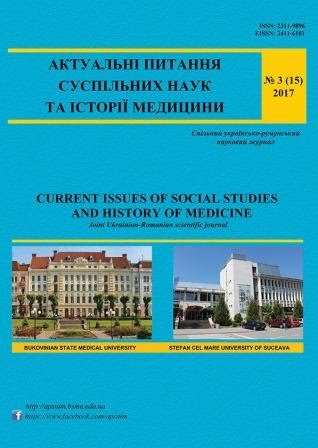ХРОНОТОП МАЛИХ ПРОЗОВИХ ФОРМ МЕТАЖАНРУ АЛЬТЕРНАТИВНОЇ ІСТОРІЇ (НА МАТЕРІАЛІ ОПОВІДАНЬ Є. КОНОНЕНКО, ДЖ. ДЖОЙСА, М. КІДРУКА, К. Е. ФРАНЦОЗА)
CHRONOTOPE OF SMALL PROSE FORMS OF THE METAGENRE OF ALTERNATIVE HISTORY (BASED ON SHORT STURIES BY E. KONONENKO, J. JOYCE, M. KIDRUK, K. E. FRANZOS)
Author(s): Antonina AnistratenkoSubject(s): Comparative Study of Literature, Ukrainian Literature, Theory of Literature, British Literature
Published by: Видавництво ВДНЗ України « Буковинський державний медичний університет »
Keywords: meta-genre; alternative history; chronotope of short prose; time concept; archetype of time;
Summary/Abstract: The article is devoted to a comparative analysis of the expression of architectural components in short prose. The starting point of temporal expressions in the fiction of small forms is the physical and mathematical understanding of time at different historical stages of development of scientific knowledge about time. The purpose of the proposed article is to demonstrate in a comparative way the concept, chronotope and archetype of time in short prose of E. Kononenko, J. Joyce, M. Kidruk, K. Franzos in comparison with the physical and mathematical understanding of time, the paradigm of views on this concept in various historical and cultural milestones and their extrapolation in the literature of the respective periods. The novelty of the article is that for the first time chronotopic concepts in short prose of the metagenre of alternative history are considered here. Research methods are a set of comparative, descriptive, historical and literary approaches. Conclusions. We can argue the role of time as a concept, chronotope and archetype in stories by V. Kozhelyanko, J. Joyce, M. Kidruk, E. Kononenko, which are manifested at different structural levels of the text. The “past-presentpresent” relationship plays a genre-creating role, forms a literary chronotope, acts as a bearer of the code of a short story or narrative, and preserves the architectural structure of the work as clear and independent of reception and interpretation. In the short prose of AH, mainly, as we see in these examples, time performs the same functions as in works of major prose genres, however, its characteristics change: the time of the short story is often relict, “thick”, such that it has no duration. Often the chronotope of a short story replaces a moment in time. The chronotope and its plot counterpart ‒ the event series ‒ are observed by the reader in the form of an exhibit, a non-dynamic construction, different from the time in which the reader's reception takes place.
Journal: Актуальні питання суспільних наук та історії медицини
- Issue Year: 2020
- Issue No: 3
- Page Range: 79-83
- Page Count: 5
- Language: Ukrainian

